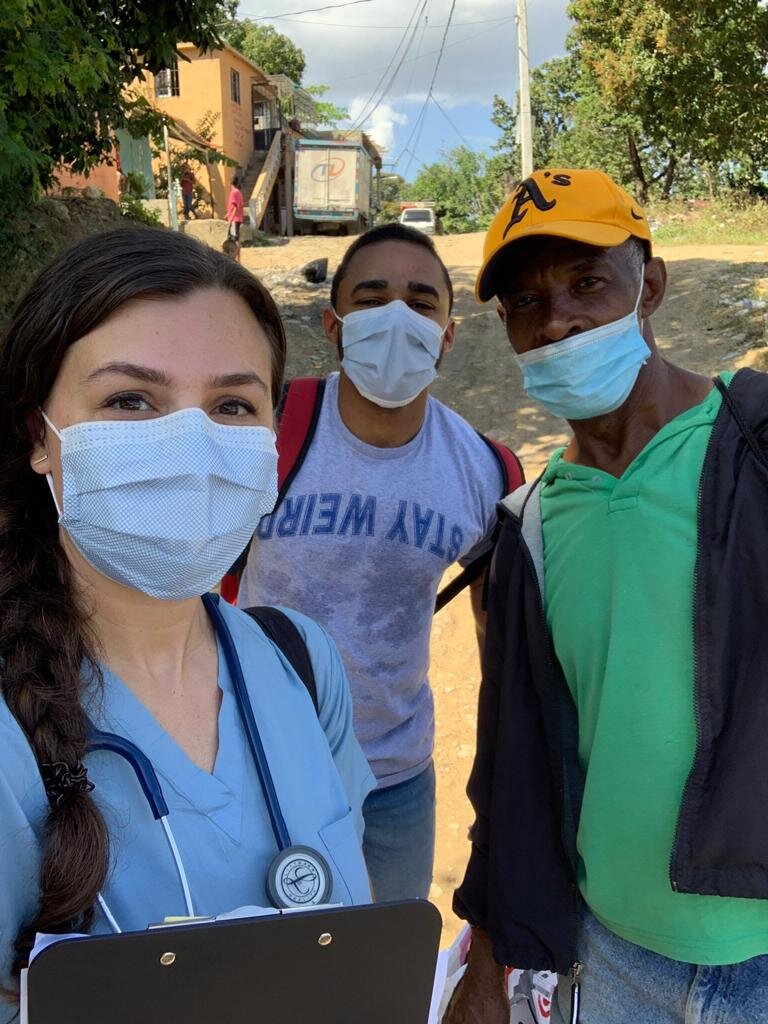ADAPTING CARE IN VILLA VERDE
Our biggest team since the start of the pandemic travelled to Villa Verde in February. The seven team members were able to see 15-25 patients a day in the comfort and safety of their own homes. Most of our patients have chronic illnesses, which require ongoing care so these visits were critical.
“The home visits are very conducive to our primary care trips,” said Physician’s Assistant Jessica Vlaming, who is leading the Diabetes study in Villa Verde. “Not only are we able to meet with a patient in their own home, but we can provide health education with the family members present, review all of their home medications and make a stronger connection. It also allows us to form a stronger collaboration with the community leaders since they coordinate the daily logistics. Furthermore, we can reach patients who normally cannot make it to the clinic, either due to their medical condition or the logistics of traveling to the clinic site in the center of town. Because of how well the home visits are received by both patients and team members, I think they will be an important part of primary care in Villa Verde going forward.”
Over the past few trips, Vlaming has adapted the Diabetes study to fit the conditions of the pandemic. Once care had to transition to home visits only, fewer patients could be seen. This meant patients with chronic diseases had to be prioritized, many of whom were known diabetics. Initially intended for screening purposes, the point-of-care hemoglobin A1c machines, which are a measure of diabetic control, were then used to evaluate the severity of a patient's diabetes. This has allowed the providers to more safely and effectively manage the patients’ diabetes and evaluate their progress.
“Since the implementation of the project one year ago, I have seen countless patients with an improving A1c level,” said Vlaming. “At the time of diagnosis, many patients had A1c levels so high (above 14) that the machine could not even read them. We are starting to see those dangerous numbers come down. Both patients and providers are thrilled to see these kinds of results, and it helps reinforce the lifestyle modifications that patients are working hard to implement!”
Having this data has allowed team members to provide tailored health education to patients and their family members. Education on lifestyle modifications is a key component of managing diabetes, so providers spend a lot of time with patients discussing their diet, the importance of taking their medications, and general well being. The home visits have enhanced this holistic approach since the team can better assess how the patient lives. The next step is to implement a more standardized diabetes education program for the community.
“Several patients have expressed to me how happy they are with their health and are excited to share the lifestyle changes in the community. One patient I have seen now three times over the past year has met the goal of achieving a normal A1c level, indicating his diabetes is now under control, and has successfully lost 12 pounds. He was very happy to share his progress,” said Vlaming.
The study has also found new patients during the home visits, whom the team could screen for diabetes and initiate care if necessary.
“It shows what the town can do for themselves,” said Dr. Steven Gallo. “Sure, if we can get better BP and diabetes control, there will be fewer long-term side effects of these diseases like stroke or heart attack. That’s the pure medical side, which is important, but I believe that the humanistic care is what will carry on and provide lasting benefits.”
While the home visits proceeded, community leaders continue to build the new clinic, which broke ground earlier this year. Several patients noted that they have contributed to the building of the clinic and look forward to more consistent care being available to them.




